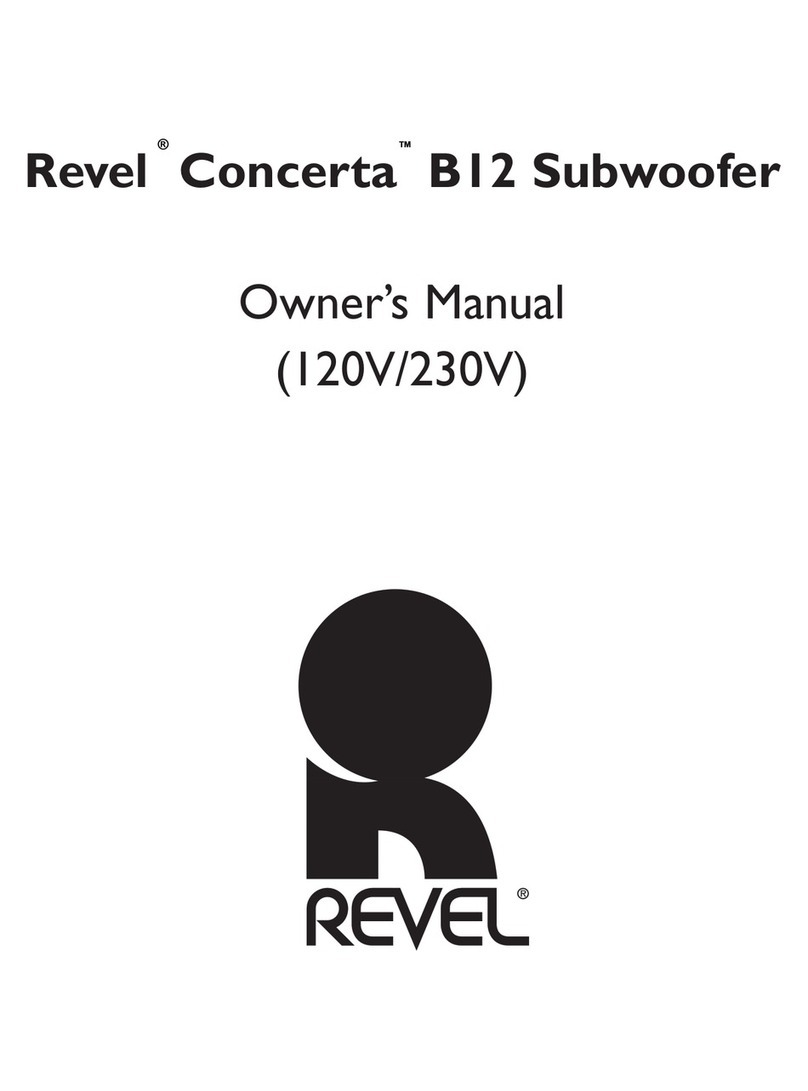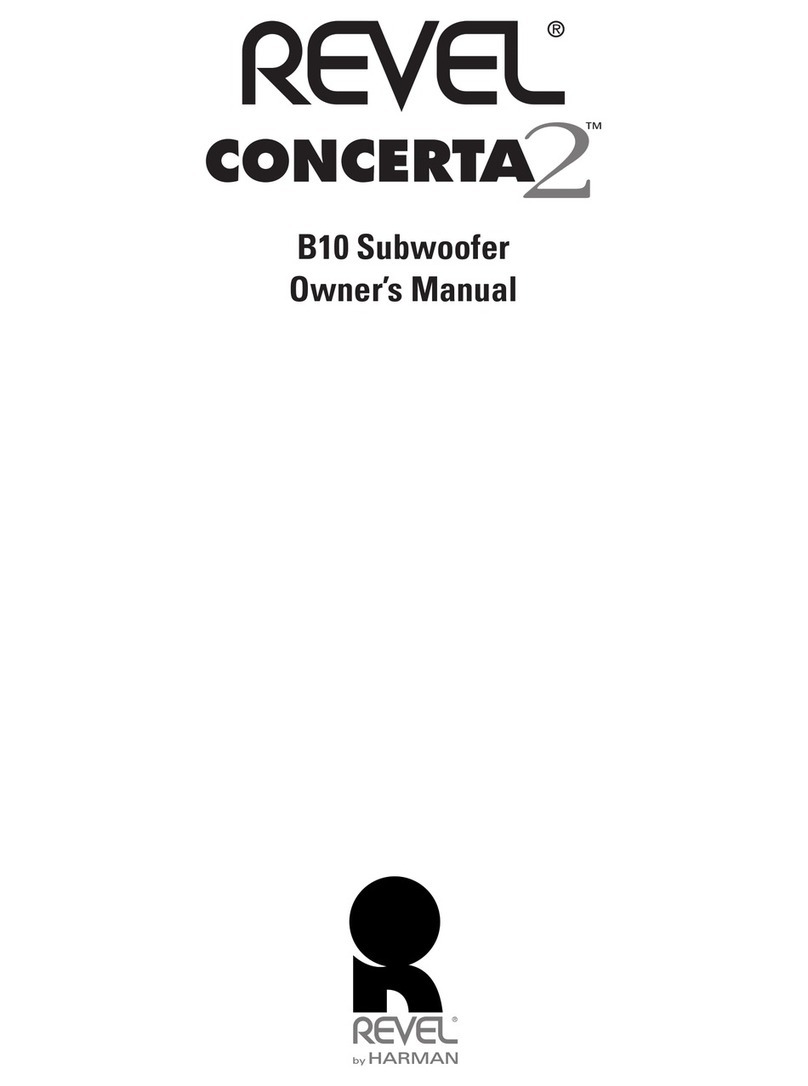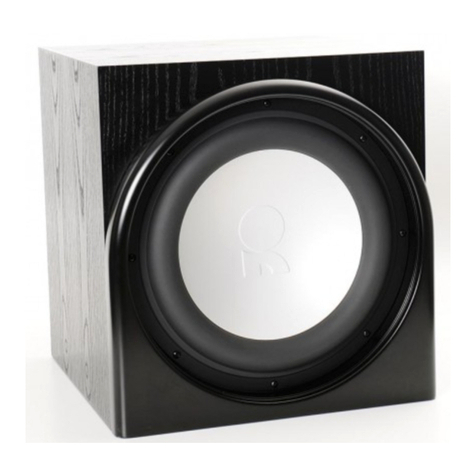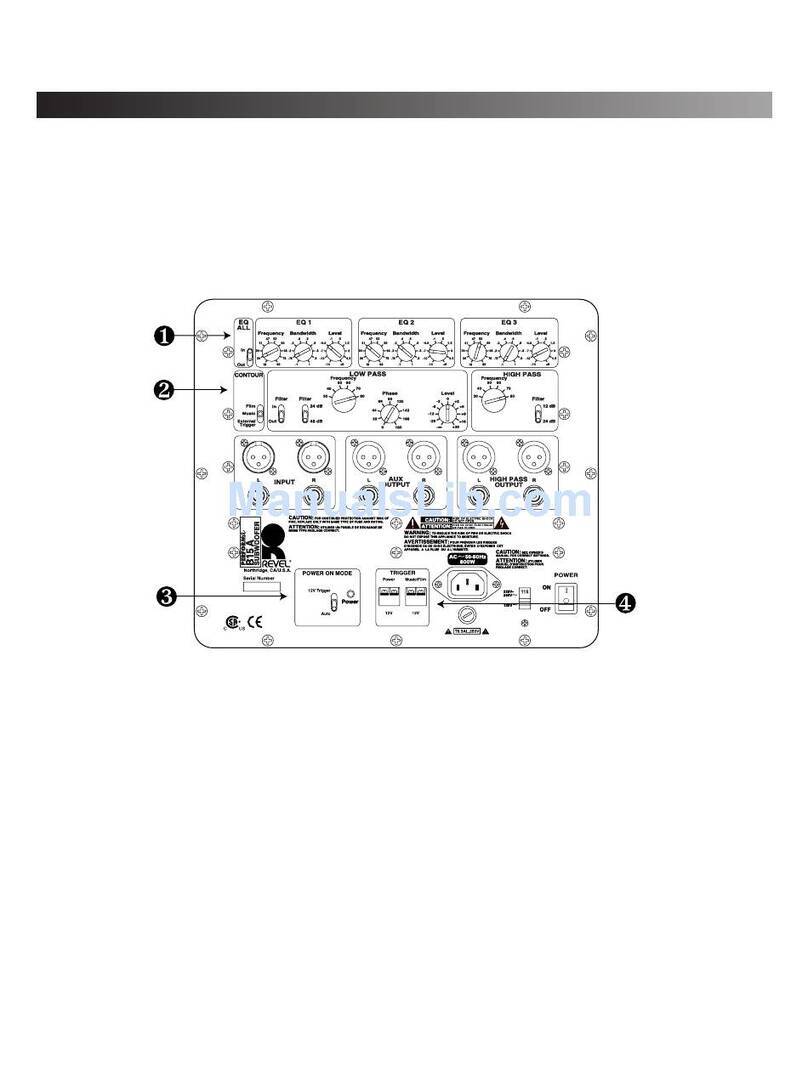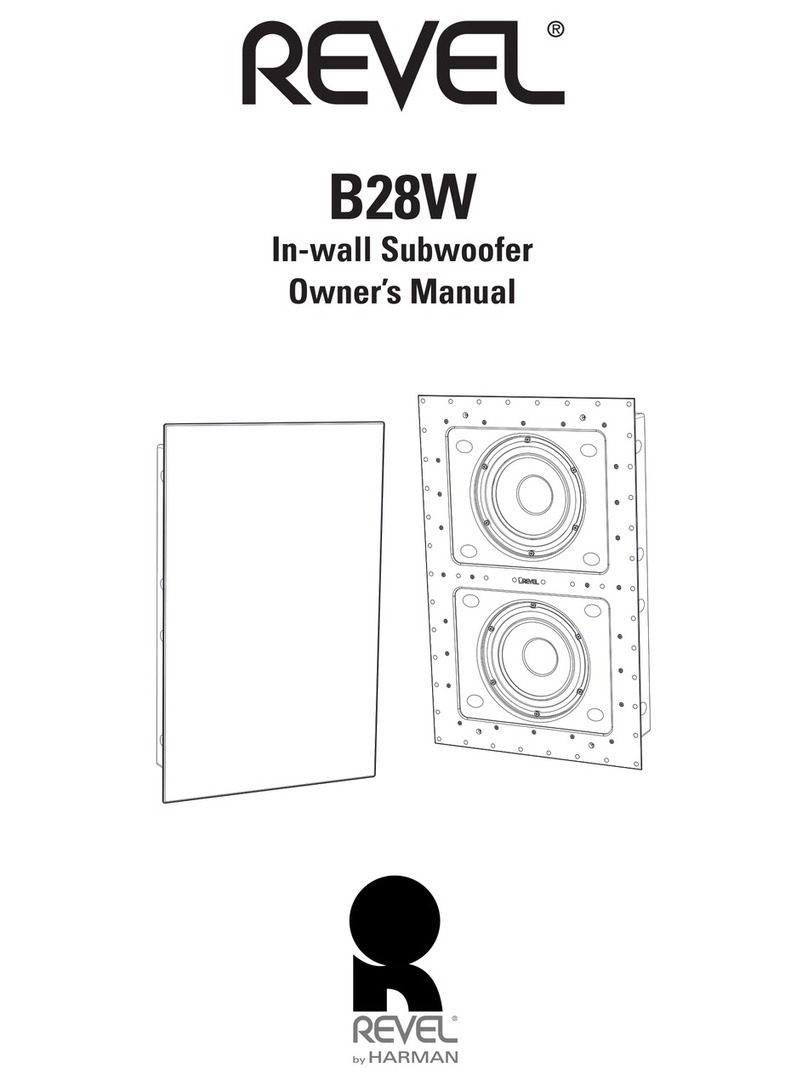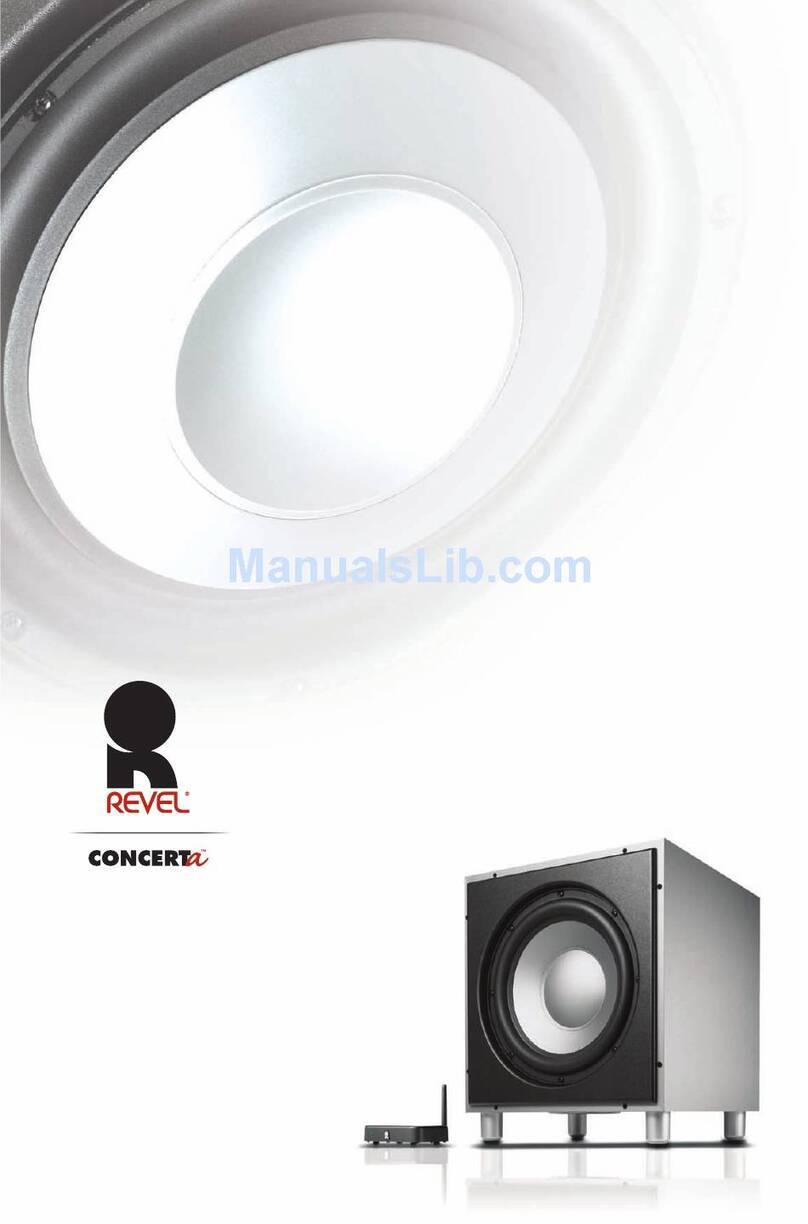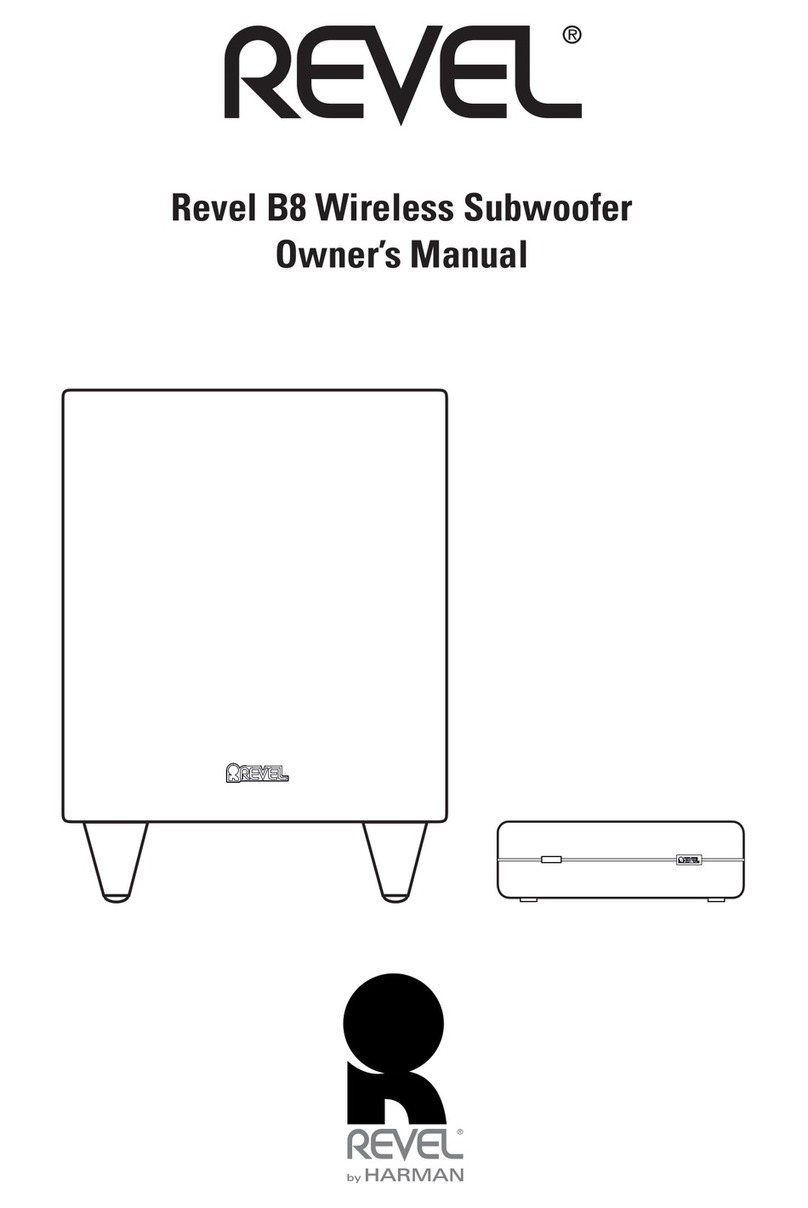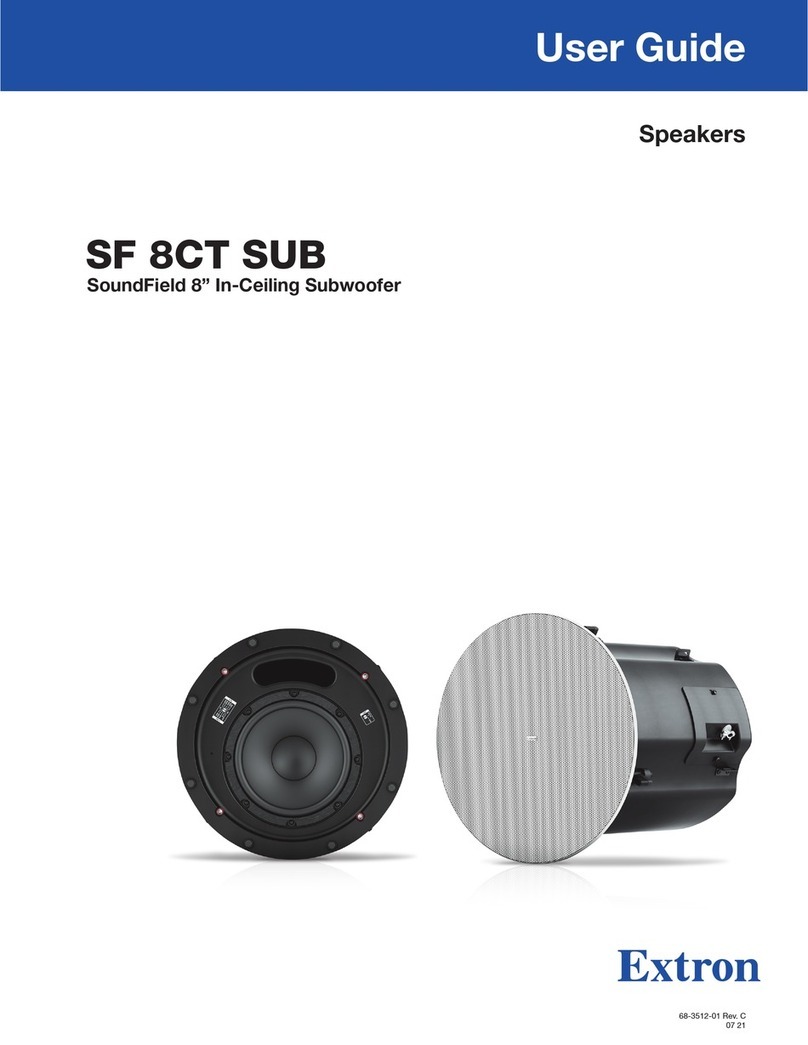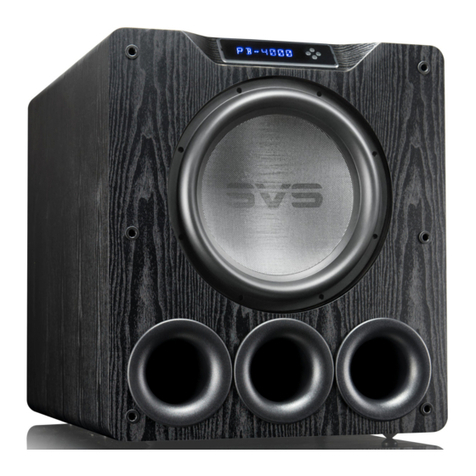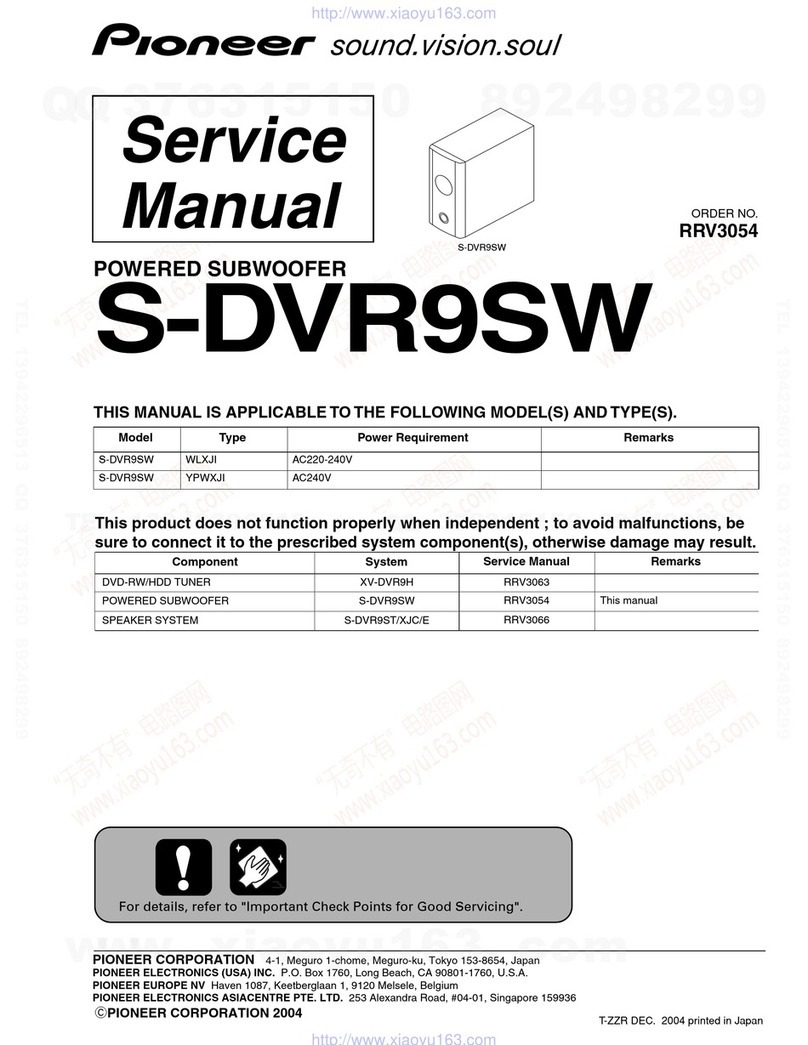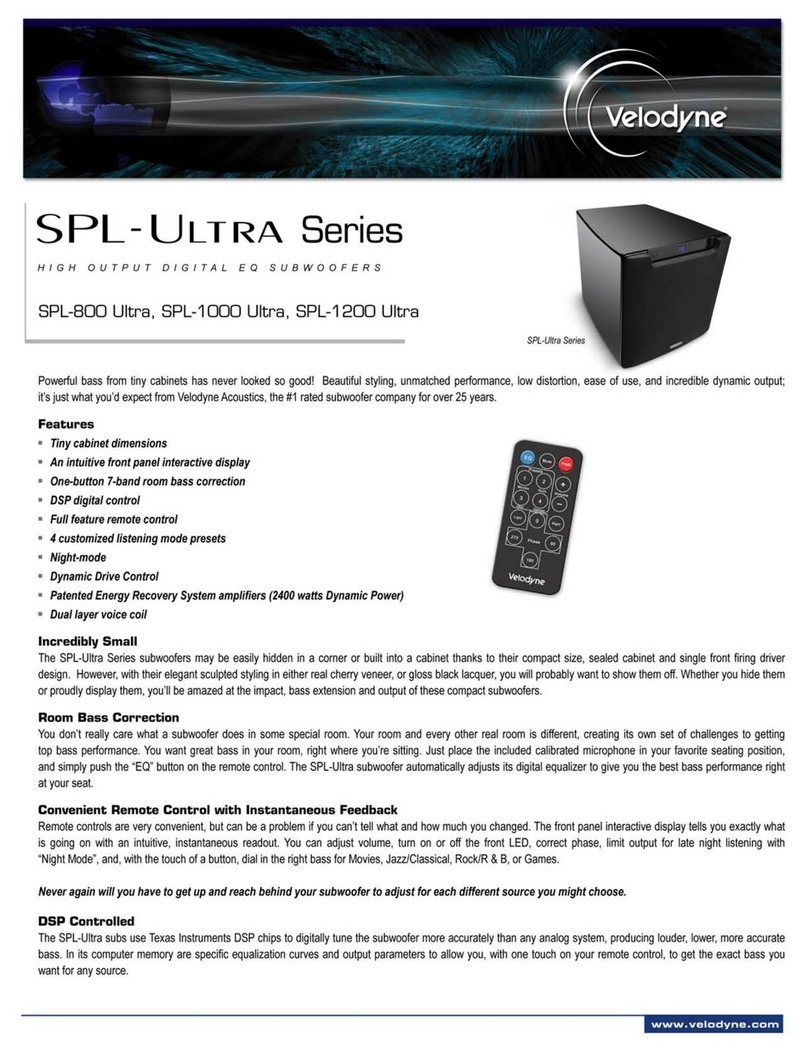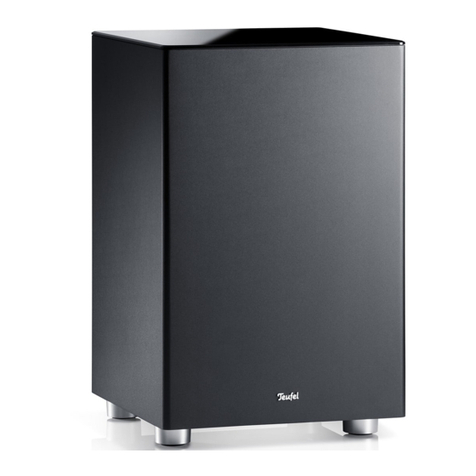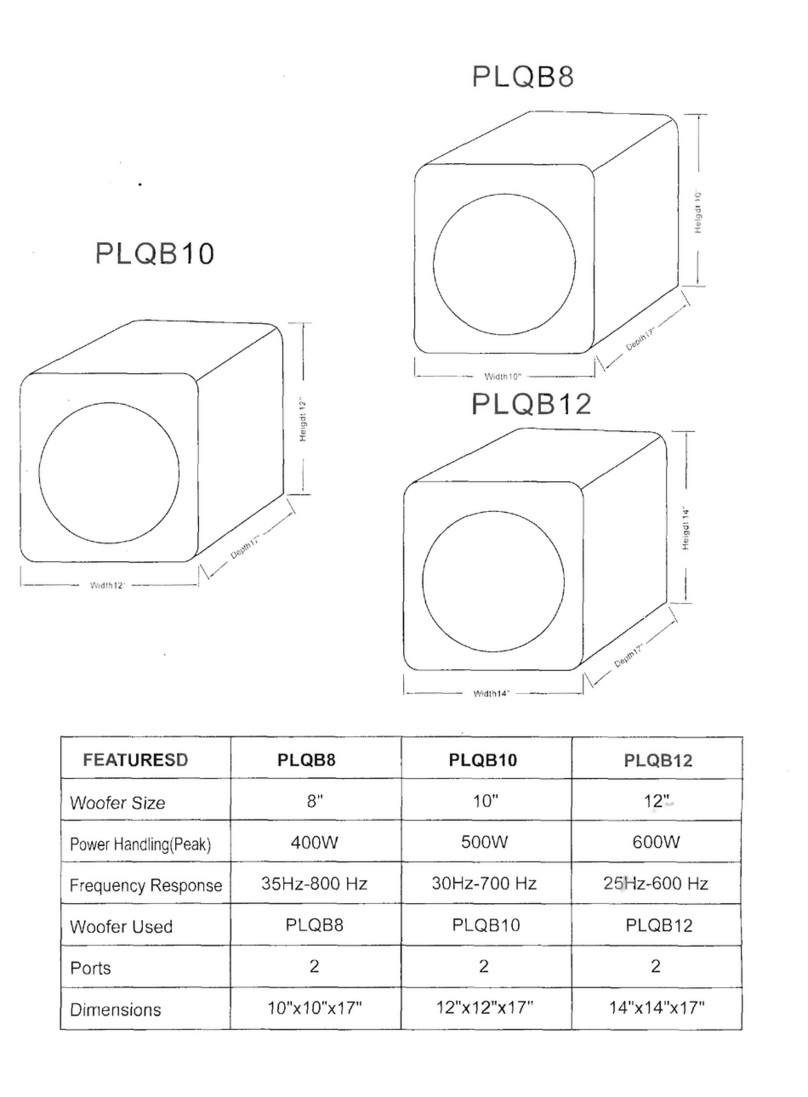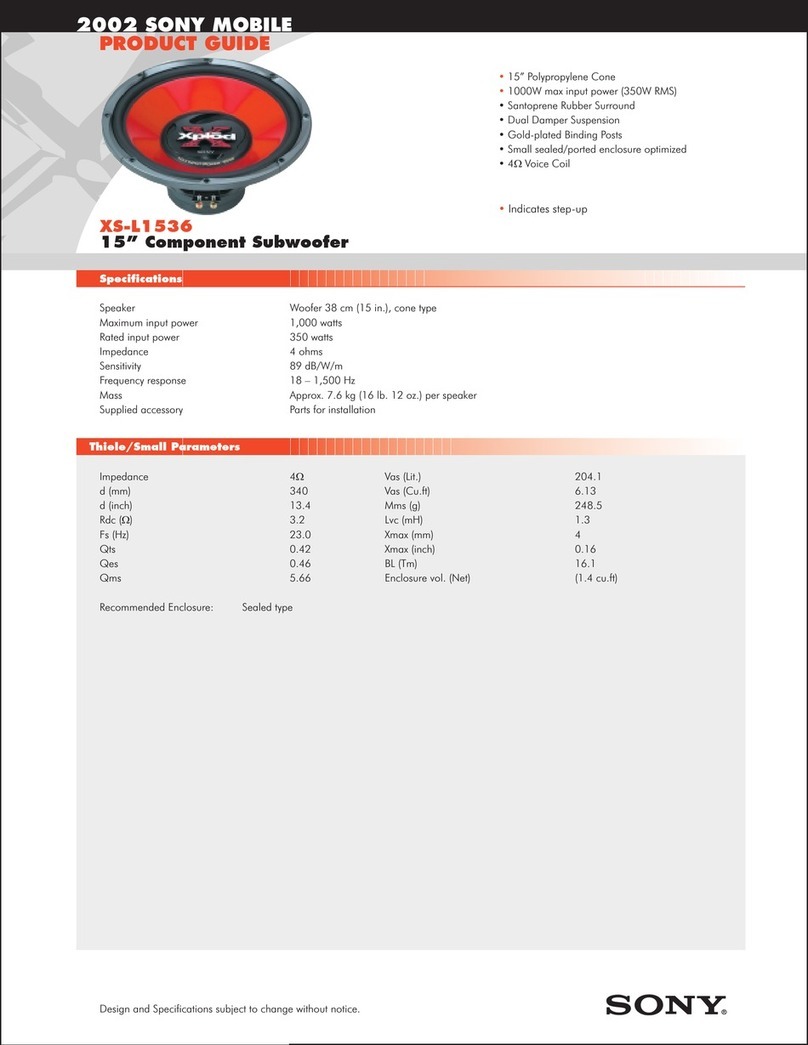
3
B1 Subwoofer
Owner’s Manual
ABOUT THE REVEL®CONCERTA™
B1 SUBWOOFER
Thank you for purchasing the Revel Concerta B1, a high-performance
powered subwoofer that perfectly augments Revel Concerta Series
loudspeakers in stereo music or home theater entertainment systems.
The B1’s adjustable controls and multiple connection options also
allow you to optimize the subwoofer’s performance in any system and
listening room.
Featuring a 12" (305mm) woofer with 1-1/2" (38.1mm) peak-to-peak
excursion and powered by a 250-watt amplifier, the B1 subwoofer
reproduces deep, realistic bass with very low distortion, even at the
lowest frequencies and high output levels.
Combining superior form and function, the B1’s proprietary woofer is
constructed with an anodized-aluminum diaphragm for great strength at
high output levels. The spider incorporates a superior-strength Nomex®/
cotton blend with optimized geometry for increased linearity. The motor
includes a large ceramic-magnet motor system. A 2" (50.8mm) copper
voice coil is wound on a Kapton®bobbin for impressive power handling
and freedom from compression. The vented center pole facilitates
heat dissipation, allowing more efficient high-power handling and low
compression.
The B1 cabinet consists of medium-density fiberboard (MDF) walls and
extensive internal bracing to reduce cabinet-induced colorations. Rubber
padded feet are attached to the bottom of the cabinet for optimal
stability, accommodating installations on any floor surface.
Since 1996, the Revel brand has been at the forefront of loudspeaker
design. Backed by Harman International’s extensive research and design
facilities, Revel Concerta Series speakers benefit from cutting-edge
development tools, such as:
• A multichannel listening lab allows for double-blind listening tests.
• A laser interferometer enables detailed driver and cabinet analysis.
• Multiple large anechoic chambers provide for precise tests and
measurements.
• Finite-element analysis allows for advanced loudspeaker modeling.
• A stereo lithography apparatus aids in achieving tight tolerances.
Adding to the proud lineage of Revel Ultima™ and Performa™ Series
loudspeakers, the Concerta B1 subwoofer further substantiates the
Revel reputation for high-quality, high-performance loudspeakers and
subwoofers.
B1 HIGHLIGHTS
• High-output capability with low distortion
• Proprietary 12" (305mm) anodized-aluminum diaphragm woofer
• Built-in 250W RMS amplifier
• Line-level RCA inputs
• Advanced woofer motor structure
• Large voice coil for wide dynamic range without compression
• Phase switch
• Low-pass frequency control
• Parametric room equalization controls
• Elegant cabinet design with vinyl finishes
SUBWOOFER PLACEMENT
Below 300Hz, loudspeaker and listener locations have a profound impact
on the way sound is reproduced. All rooms have “standing waves,” by
which certain frequencies are emphasized or diminished. Their complex
patterns can combine to introduce tremendous sound coloration at low
frequencies.
The Concerta B1’s Equalization controls can help to compensate for
these effects, but no electronic system alone can fully compensate for
the dramatic effects of room acoustics. Every room has locations where
“nulls” at specific frequencies occur. These cancellations of the sound
are like “black holes,” which no amount of equalization can fill. The
best results are always achieved through careful placement of both the
loudspeakers and the listening position. Preferable placement can be
determined through the use of computer modeling programs, or by trial-
and-error measurements. For optimal results, find the best loudspeaker
and listener locations first, then use the B1 Equalization controls for
fine-tune adjustments.
To help determine good locations for the subwoofer(s) and the
listener(s), it is recommended that you make high-resolution in-room
response measurements. Your authorized Revel dealer can make the
appropriate measurements, using suitable equipment to ensure optimal
results.
NOTE: Many sound-measurement devices are not accurate
enough to properly measure low-frequency performance in a
listening room, since room boundaries can often cause modes
(standing waves) with very narrow-band peaks and dips.
Check with your authorized Revel dealer to confirm that your
measurement equipment is suitable for accurate, high-resolution
measurements.

